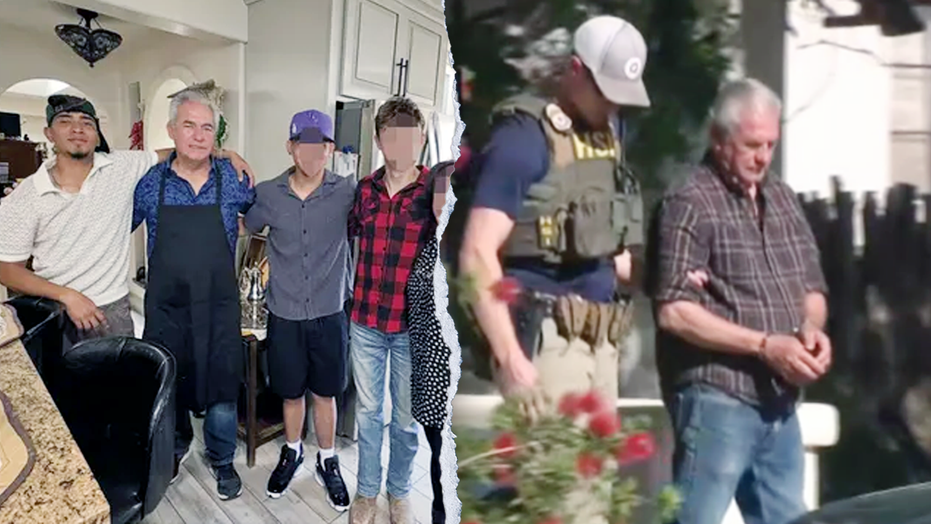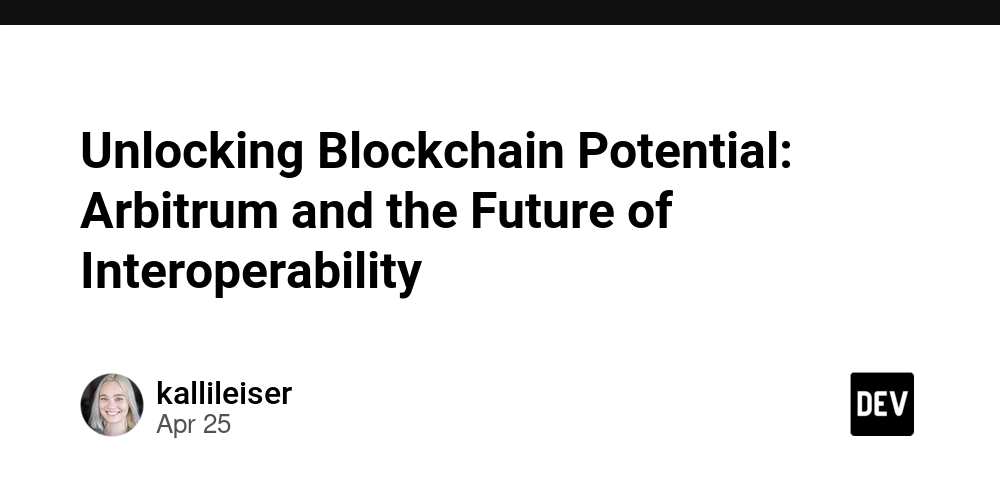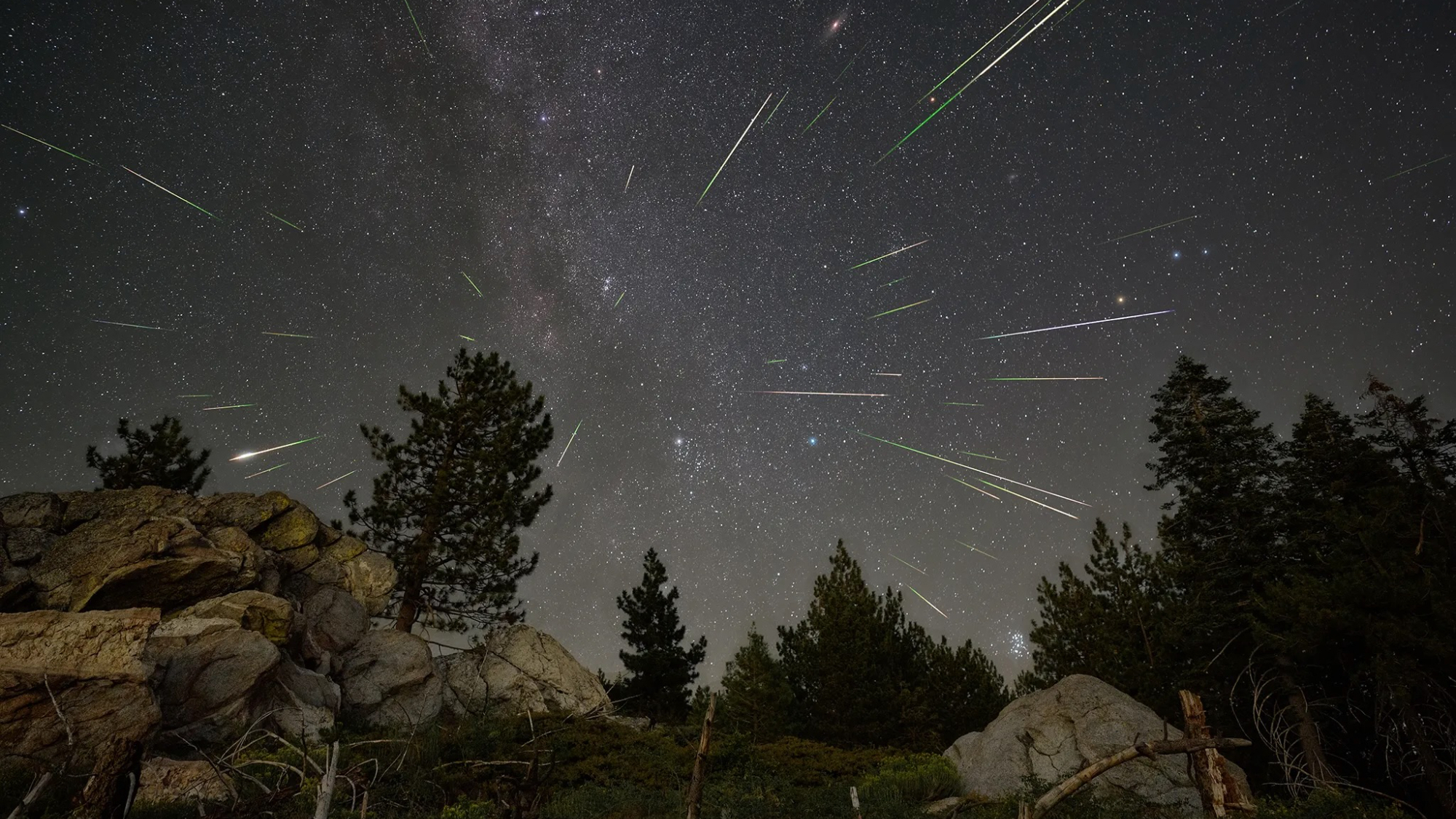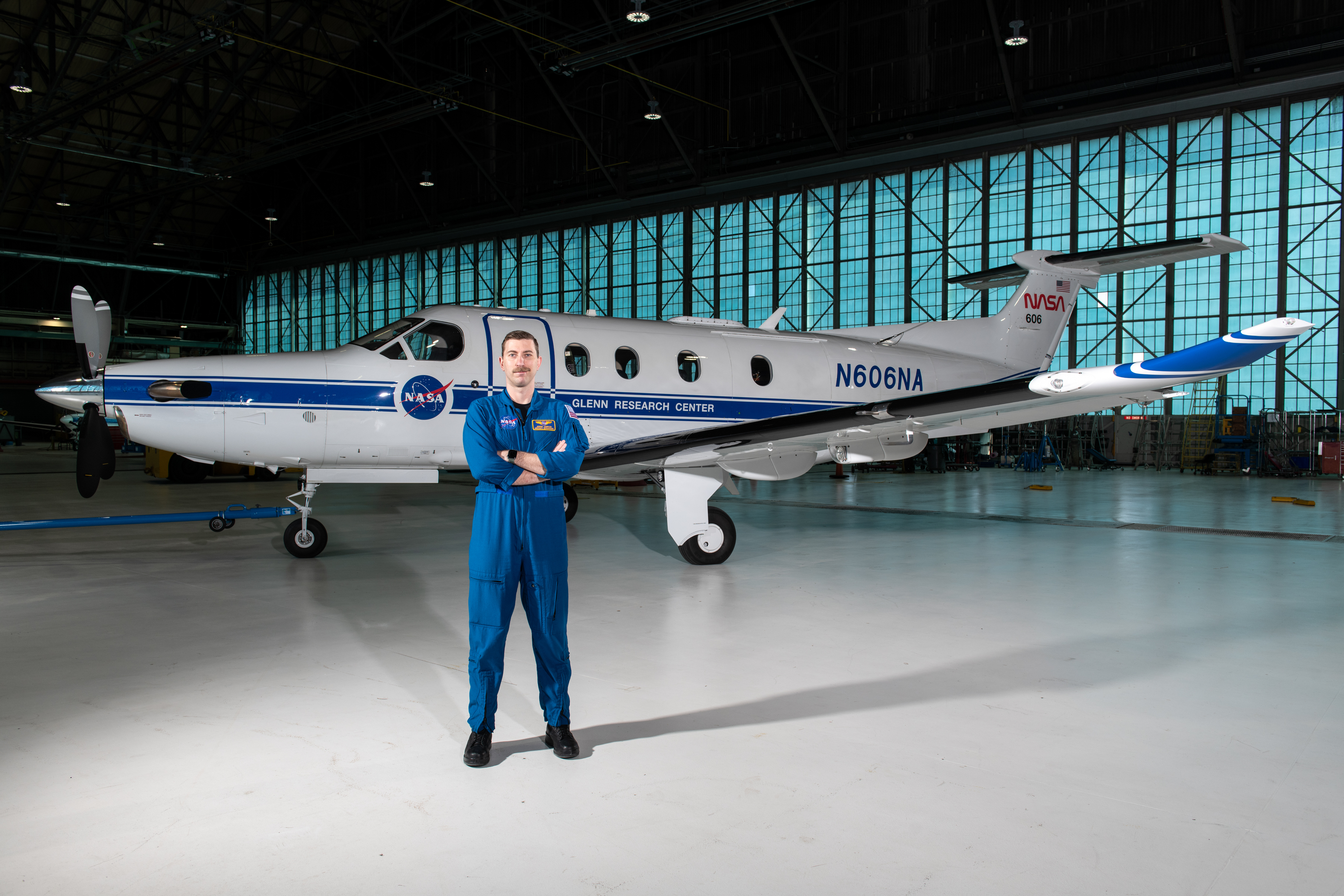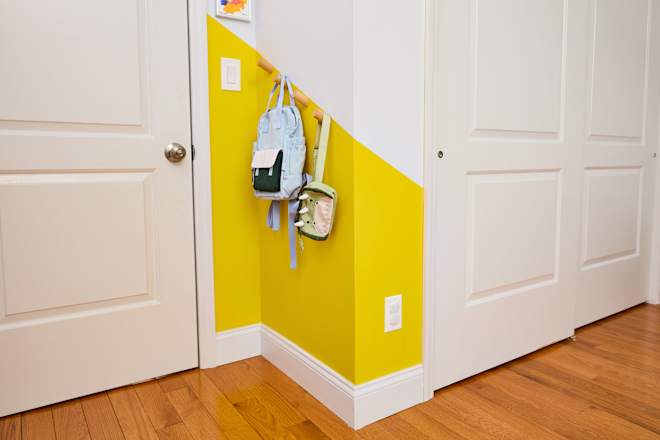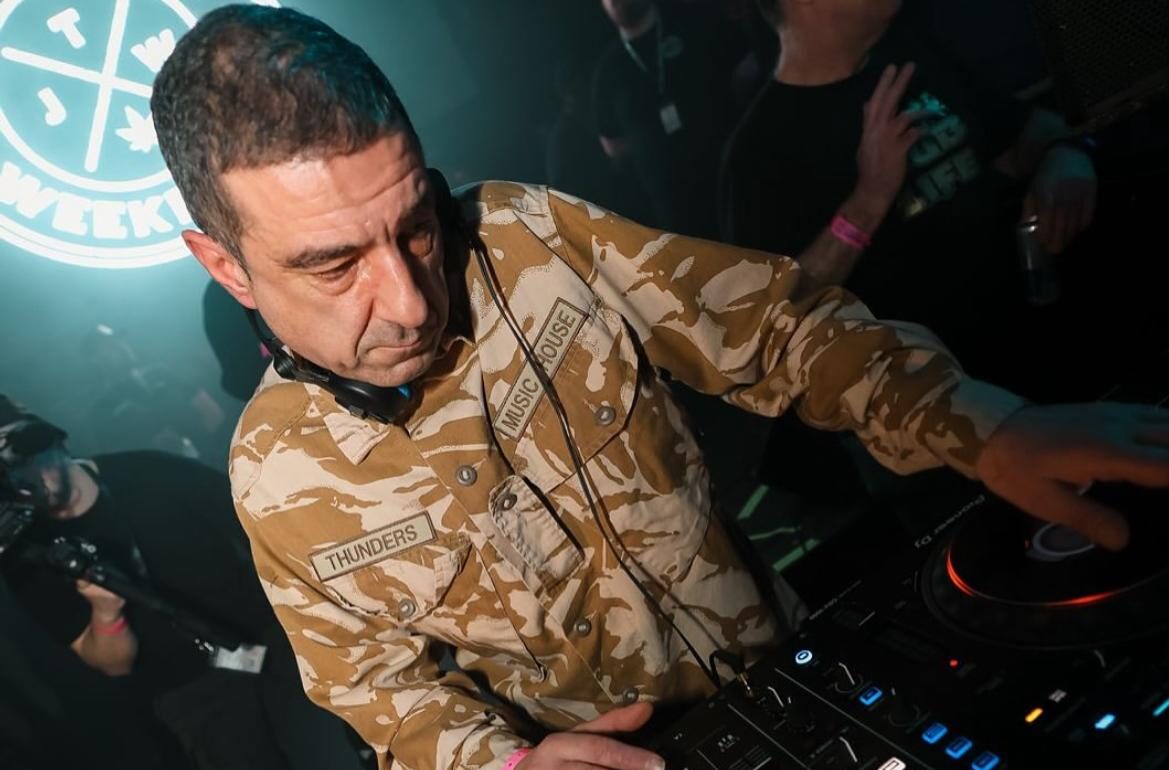Practical Effects, Easter Eggs, Deleted Scenes & More with ‘Until Dawn’ Director David F. Sandberg [Interview]
It’s no easy feat to successfully adapt a video game into a film. Despite how commonplace adaptations seem to be nowadays, the question remains unanswered as to what the perfect formula is to approach adaptations in a way that is both faithful to the source material, and satisfying to general movie-goers. Until Dawn is a […] The post Practical Effects, Easter Eggs, Deleted Scenes & More with ‘Until Dawn’ Director David F. Sandberg [Interview] appeared first on Bloody Disgusting!.
![Practical Effects, Easter Eggs, Deleted Scenes & More with ‘Until Dawn’ Director David F. Sandberg [Interview]](https://bloody-disgusting.com/wp-content/uploads/2025/01/Screenshot-2025-01-16-090708.png)
It’s no easy feat to successfully adapt a video game into a film. Despite how commonplace adaptations seem to be nowadays, the question remains unanswered as to what the perfect formula is to approach adaptations in a way that is both faithful to the source material, and satisfying to general movie-goers. Until Dawn is a unique behemoth in itself–it may be the first time a video game that was specifically crafted to play out like an interactive film was adapted into…well, a film.
I was excited to catch up with Until Dawn‘s director and director of photography for many reasons, but most specifically because they have both worked on horror films in the past, and both have experience with adaptations. I knew David F. Sandberg had directed horror titles Lights Out and Annabelle: Creation, and the comic book adapted film, Shazam!, and I’d previously had the pleasure of interviewing Maxime Alexandre on his experience as director of photography on Resident Evil: Welcome to Raccoon City.
As someone who has played Until Dawn about five times, I was eager to dive into the process of adapting the horror video game with them. Read on below for what we discussed.
This interview has been transcribed and edited for length and clarity.

Bloody Disgusting: When crafting the film, did you go into it with the mindset to make a good adaptation of the video game, to just make a good film, or was it always on your mind to strike a balance of both?
David F. Sandberg: You definitely want to strike a good balance, but what I liked about the script was that they didn’t try to just do what the game already did so well. The game is like a 10 hour movie–which is a lot to work with–so I like that [the screenwriters] did an expansion of the world instead of trying to do what we’ve already seen. So it’s more Until Dawn instead of the same Until Dawn. For me, it was such a joy to [implement] all these different genres and go all out with practical effects and monsters. But it was a balance in that you want a movie that can be enjoyed by the people who haven’t played the game, but it also needs to fit into this established universe, and we have these things [in the film] that tie it all together.
Maxime Alexandre: When I read the script for the first time, I was satisfied that it wasn’t 100% based on the game–more like an evolution. It could be frustrating focusing so much on pleasing the gamers that you start losing the cinematographic aspects of a movie [while trying to adhere to] the game.
BD: Was it intimidating to adapt a video game that has such a cult following, especially given the current climate of video game adaptations?
Sandberg: We have some experience with this from Shazam!–comic book fans can also get pretty intense. To be honest, after Shazam! Fury of the Gods, there was so much sort of negativity against me that’s a lot to deal with, that I kind of felt like “I don’t want to do another IP- based movie.” Well, for one, everything is IP these days [laughs], but when I got this script I was like…I can’t say no to this. Look at all the cool shit we’d get to do!
Alexandre: My answer is like copying my best friend [Sandberg] on the other side: as a cinematographer, it was a huge gift. Being able to shoot so many practical effects on camera–even simple things like driving a car, nowadays, you often end up in a studio in front of things like video walls, but we did everything on camera. It felt a lot like jumping back into, as I like to say and everyone laughs, cinema-cinema.
Sandberg: Shazam! was a movie where we did driving shots on a stage, and while it’s much more comfortable, it doesn’t feel real. But to do it how we did [with Until Dawn], where we had everyone cram into an actual car, and you have a little piece of road that you can only get one or two takes from, and you’re in a van behind it with a walkie talkie…it sucks but you get the light interaction, you can really feel it more. I actually just watched a movie the other night–I’m not going to say which one–but there was a driving shot where there was no light changes [on the actors], and on one side, the background was going by faster than the other side, and it just takes you out of the movie.

BD: What’s something new that the film will offer to fans of the Until Dawn game, and why they should go see it?
Sandberg: For me, it’s more Until Dawn. If you liked the game, the vibe, and the type of kills in it, you get more of it in the film. For fans in particular, I think it’s fun to find all the little references and homages–even the scene with the restraining chair that Megan’s in–we made that as an exact replica from one in the game. So I think there’s a lot of fun for fans in the film.
BD: In Until Dawn (the game), there’s a character that’s really invested in horror films and practical effects–he leverages that passion in an elaborate prank against his friends. Were you channeling that character with the effects in the film?
Sandberg: [Laughs] That’s a very good point, but it wasn’t really conscious! It’s more so something that I’ve dreamed about forever to be able to do. But it is challenging, it takes a lot of time and prep, and you only get one shot or two [when dealing with practical effects] so you better hope it works. We had to do the bathroom scene on the last day [of shooting] because it destroyed the set with all the blood and everything.
BD: Maxime, I wanted to ask if you faced any specific challenges you faced with the cinematography of the film given that you were adapting a video game that is so heavily linked with a sense of decision and control. Specifically, when it comes to the sense of immersion, given that audiences aren’t in control of what’s happening.
Alexandre: When starting any movie, I go into building it step by step based on the requests of the director. In this one, one dogma that I really focused on with the storytelling was to underline how the cast was losing memory, strength, and feeling fatigued. There’s a lot of factors from a cinematographic point of view that you may barely see in the film, but you probably feel. A lot of the camera movement was impacted by the deaths [and themes]. One challenging aspect was the fact that the cast is made up of five characters, and keeping all five of them within the frame, especially given some of the shots involving practical effects. Going back to the car example, yes it’s just someone driving a car, but there’s also a storm outside, and a camera moving inside the car, so it’s not that simple.
Sandberg: One thing I like that Maxime did that I haven’t really seen done too much otherwise is leaning into the fact that your eyes get used to the dark. There’s one scene in the movie where all the lights go out, and you can’t see anything and they need to use flashlights. But as the scene goes on, you see more and more as Maxime lit it more and more with the thinking that, well, if you’re in a situation like that, your eyes start getting more adjusted to it. There’s a couple times we do that in the movie.

BD: As a follow-up to this question, it felt like there were a lot of intentional moments in the film that felt reminiscent of the “Don’t Move” sequences that the game is famous for.
Sandberg: The biggest reference to what you’re talking about is that red light scene when the Wendigo is right by Clover–it’s like straight from the game–don’t move the controller because it’s right there.
BD: Speaking of the Wendigo. At one point, it seems like the audio of the Wendigo screeching is pulled directly from the game?
Sandberg: They are! We actually got the actual audio files from the game developers for the movie. One thing that we had to change a little about the Wendigos from the game is that they have super long limbs that no human would have. Since I really wanted to do as much practical effects as we could, and I wanted it to feel like there was actual “Wendigos” with the cast, we cast people for them and put them in makeup. We tried out best to find the tallest, skinniest people we could in Budapest [where the movie was filmed]. We hired these dancers who can move their bodies in these interesting ways to give them a type of non-human feeling.
BD: Can you elaborate on where the film fits in the Until Dawn universe?
Sandberg: The film was written that these events take place after the events of the game. We wanted to have it all tied together as much as possible.

BD: There’s a great sort of “found-footage” sequence in the film. There’s that great moment of the ghost figure appearing at the end of a dark hallway that swoops towards the camera. Can you elaborate on that sequence more?
Sandberg: That’s me! What we did was build a full-scale set, and then a 60% scale set. When we see the actors, we’re filming one direction, and then when we pan over, there’s a hidden cut where the camera operator’s on a little chair so it looks half as tall, then I’m crouched down at the end of the hall with the mask and come out. That’s something I’ve always wanted to do–play with different scales of sets–so that was a fun thing about the found footage sequence.
Alexandre: The funny thing about the found-footage sequence is that we shot the movie with the Alexa 65 camera, and with that sequence, we considered an approach of doing it with a DSLR or something similar, but I was so attached to keeping the same type of chromatic effects throughout the film. But it was funny, with certain shots in the sequence, when the camera was falling we would just throw the Alexa 65 and watch it fly onto the floor.
Sandberg: [Laughs] It’s a huge, heavy camera. But it’s funny, in the witch’s house, there’s a TV and there’s a little cameo of Lotta [Losten] as a reporter, and for that, we had shot it on the Alexa 65, then cropped to 4:3, transferred to VHS, then played back on a CRT-TV through the RF connection. So it’s like the shittiest Alexa 65 quality you’ve ever seen.
BD: The Butterfly Effect is an integral component of the game. The film seems to lean into the concept given the cast’s choices and how they tie into how many tries they have to survive the night. Were you intentionally leaning into that?
Sandberg: There was definitely a version of that with the night starting over each time leading to different choices which ties in. There’s even some hidden little runes throughout the film–I had found this rune that means “Dawn” or “New Day” or something–and it kind of looks like the wings of a butterfly–so we put that in here and there, like in the witch’s house there’s that shape made out of bones, and on the pickax there’s the little rune. So we definitely tried to tie that in as much as we could.
BD: The video game is known for having a ton of alternate endings. Was a different ending to the film or alternate endings ever considered?
Sandberg: There is an alternate ending to the film in the deleted scenes, which will be in the home video release! It ends the same way for the main cast, but it’s a little different.

The post Practical Effects, Easter Eggs, Deleted Scenes & More with ‘Until Dawn’ Director David F. Sandberg [Interview] appeared first on Bloody Disgusting!.
